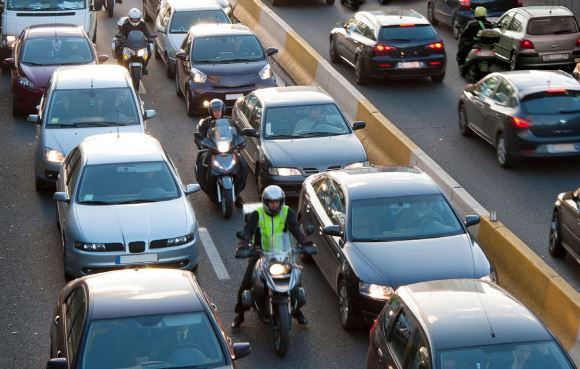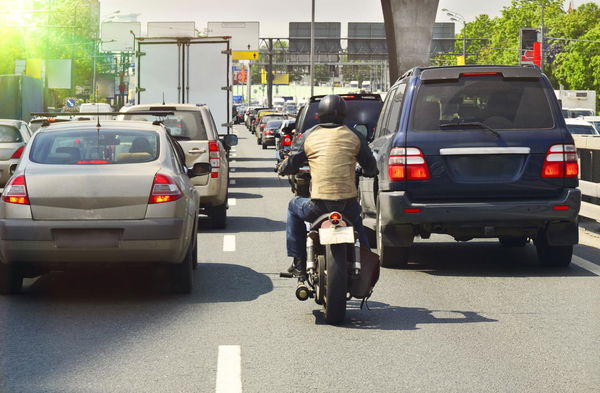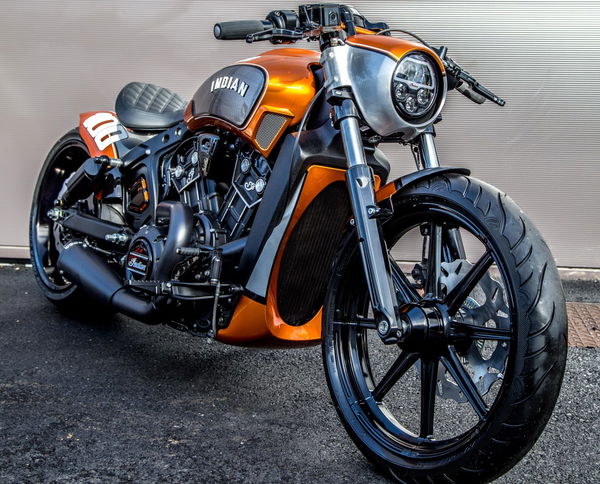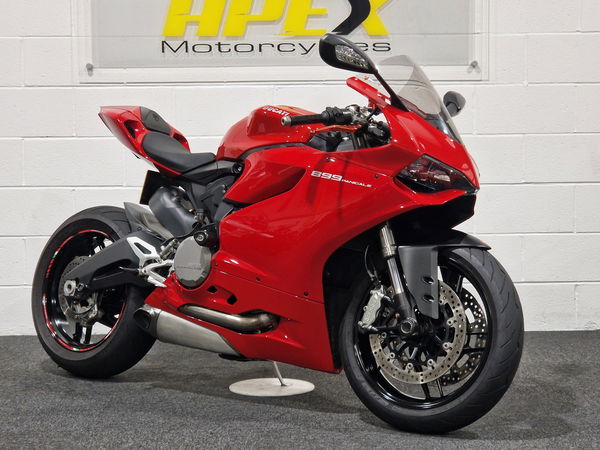France restarts filtering / lane-splitting ‘experiment’ in 21 regions
Lane-splitting & filtering divides opinion, but who’s on the right side? France temporarily re-allows motorcycles and scooters to filter in traffic.

DESPITE France never really allowing lane-splitting or filtering, it was commonly tolerated outside of the 6-year experiment which ran in 11 ‘départements’ (or regions) between 2015 and 2021. This has just been reversed, with the experiment restarted in 21 of 96 départements for 3 years.
French riders in 21 participating regions are now able to legally ride on the lines between traffic as the authorities seek to find out if filtering is worth all the fuss.
As the first experiment concluded earlier this year (and the results were in) accident numbers were in fact going up on the subject roads, so French authorities decided to ban lane-splitting across the country as a result.
Perhaps it was the small sample size, or perhaps the protests of thousands of motorcyclists and scooterists, but they're giving it another go.
It remains to be seen if any of those who break the rules outside of these experimental areas will receive the aforementioned €135 fine and 3 points on your licence if caught riding the line.

According to Le Repaire des Motards, the 21 participating areas are: ‘8 départements of I’lle de France (Paris area), in the metropolis of Lyon, in the Alpes Maritimes, the Bouches du Rhône, the Drome, in Haute Garonne, in Gironde, in the Hérault, in Isère, in Loire-Atlantique, in the North, the Eastern Pyrenees, the Rhône, the Var and the Vaucluse.’
These areas will temporarily allow riding between queuing vehicles, but not as a free-for-all. There are rules to be obeyed!
What's your opinion on filtering & lane-splitting?
The French rules for filtering, again from Le Repaire des Motards:
- The practice is authorized on highways and roads with two carriageways separated by a central reservation and equipped with at least two lanes each, where the maximum authorized speed is greater than or equal to 70 km / h,
- Traffic between lines of vehicles at a standstill or moving at a very low speed is practised on the two lanes, having the same direction of movement, the most to the left of a roadway,
- The lateral space between vehicles travelling on the two leftmost lanes of a roadway must be sufficient;
- Inter-line traffic is practised at a maximum speed of 50 km / h, with a differential of 30 km / h compared to other vehicles,
- None of the traffic lanes on the road is under construction or covered with snow or ice,
- Before travelling in inter-lanes, the driver warns other users of his intention,
- Motorized two or three-wheelers must not force the passage,
- It is forbidden for a vehicle in inter-lanes to overtake another vehicle in inter-lanes,
- When traffic becomes more fluid and vehicles are travelling at more than 50 km / h on at least one of the two lanes, the two or three-wheeled motor vehicles must resume their place in the tracks.

Failure to abide by these rules (and/or overtaking on the right, not respecting safe distances, or changing lanes with no regard for safety) can still land a fine and points, particularly outside of the experiment areas.
Also, I’m wondering what “the driver warns other users of his intention (to filter)” means - hazard lights on? A toot of the horn? Shouting ‘Watch out, Françoise coming through!”?
Visordown opinion? Filtering keeps traffic flowing, and when done correctly has no adverse effect on any other road user. It should be allowed to the discretion of the rider. End of.











